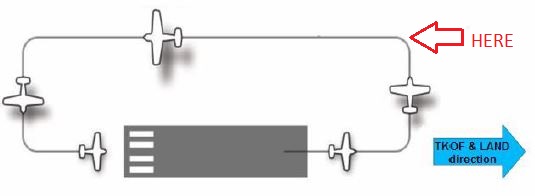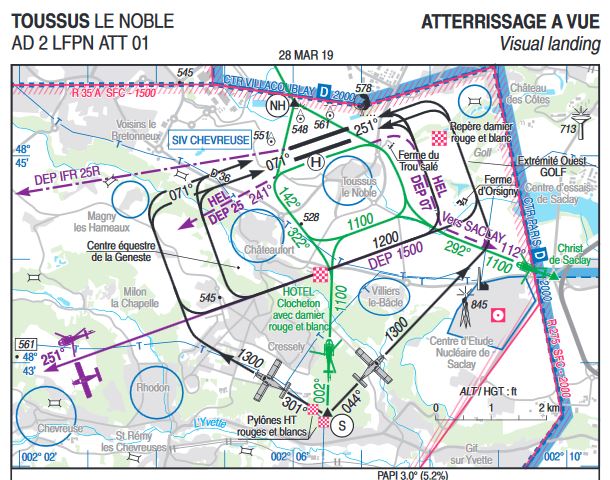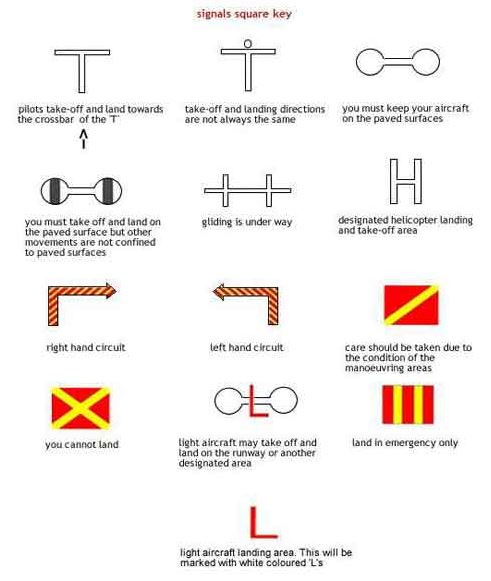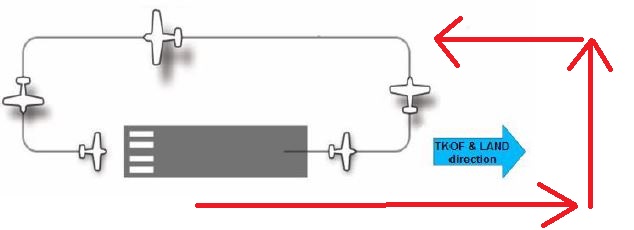¶ Introduction
First you should be familiar with aerodrome traffic.
In real life, most little airfields are not controlled, which means that no ATC will tell you how to join the circuit. You should determine the appropriate runway for landing, join the circuit and inform other traffic on a dedicated frequency where you are, what you are doing etc. This is also the case at IVAO; you shall do that via the UNICOM frequency (122.800).
¶ Airport being manned by a FIS agent
¶ Joining the circuit
Unlike an Air Traffic Controller (ATC), an Aerodrome Flight Information Service (AFIS) does not provide any clearance but only information on joining the circuit/takeoff/landing.
The AFIS will inform you of the runway in use, and other traffic in the circuit.
Caution ! Even if the AFIS tells you something, do not forget you are the pilot in command and responsible for the safety of your aircraft and anticollision.
Nevertheless, the AFIS is very helpful to know other aircraft position. You should listen carefully to all information given.
¶ Radio
- 🛩️Orleans information, F-BTLU
- 📡F-LU, Orleans information, pass your message.
- 🛩️F-LU, CE43 from Toussus, 5 minutes from being overhead of the airfield, request instructions to join the circuit.
- 📡F-LU, runway in use 23, report field in sight, traffic type Cessna, on right hand circuit.
- 🛩️Runway 23 in use, will report field in sight, roger traffic information, F-LU.
- [...]
- 🛩️Airfield in sight, F-LU.
- 📡F-LU, report downwind runway 23, the Cessna is on final.
- 🛩️Traffic in sight, reporting downwind runway 23, F-LU.
- [...] Same for downwind & base
- 🛩️Final runway 23 for a full stop landing, F-LU.
- 📡F-LU, runway is clear, wind 240° 8 knots, report runway vacated
- 📡Landing runway 23 reporting vacated, F-LU
¶ Unmanned airfield
¶ Introduction
The airport circuit shall be joined at the beginning of the down-wind leg at circuit altitude.

Knowing that, you should adapt your path to join the circuit correctly.
However, some airports may have different procedures. Example below: all traffic must report point S, then join the base leg for the runway in
use.

¶ Determination of the runway in use
Before joining the circuit, you need to know which runway will be used for landing.
¶ Traffic in the circuit
If you listen to the airport frequency/UNICOM and you hear/read another aircraft is already in the airport circuit, you may have an idea of the runway in use and position of the other aircraft.
Aircraft already in the circuit always have priority over aircraft joining the circuit !
¶ No traffic in the circuit
If the frequency is silent, you will need to determine the runway in use by yourself. You can look at the METAR of the airport or the closest airport around equipped with a meteorological station to have an idea of the wind.
Then, you should proceed abeam terrain to observe runway and airport.
Proceeding abeam terrain should be done above the altitude of the runway circuit
The common way to do it is at 500ft above, however this is only a suggestion. If weather or airspace class does not allow you, just above the circuit's altitude is sufficient.
Prior to that you should have a look on the charts to find out where to look when you are abeam (e.g.: runways position, wind-sock position, lighting, signal area).

According to the signal area and the wind-sock, you are now able to select the runway to use.
¶ From overhead the airfield to downwind
If no signal forbids you to land, you can join the circuit. The only legislative reporting point is the beginning of downwind. You can adapt your pattern according to the environment and the traffic. Nevertheless, the most applied pattern is the one below.

- Leave the overhead of the airfield on a track parallel to the runway centerline in the takeoff direction.
- Once clear of any potential traffic taking off from the active runway, join the crosswind leg of the traffic pattern. Descend to the published circuit altitude.
- Then resume a standard circuit altitude as published.
¶ When do you have to report your position?
Position reporting should be done ideally at the following stages:
- 2 mins before being overhead of the airfield
- overhead the airfield
- when joining the downwind leg
- when joining the base leg
- when joining the final
- when runway is vacated
¶
- 🛩️Toussus, F-GDGJ, coming back from a local flight, 2 minutes before being overhead of the airfield, reporting abeam 1500ft.
- 🛩️Toussus, F-GJ, overhead the airfield, altitude 1300 feet, reporting left downwind runway 25.
- 🛩️Toussus, F-GJ, left downwind runway 25, reporting base leg.
- 🛩️Toussus, F-GJ, base leg runway 25, reporting final 25L for a full stop landing.
- 🛩️Toussus, F-GJ, on final, landing 25L, reporting vacated.
- 🛩️Toussus, F-GJ, runway 25L vacated, taxiing to the general aviation apron.
This is an example of what can be done.
- "Toussus" is the name of the airfield. On the IVAO network, you should use the ICAO code of the airfield as it may be easier for everybody to determine your position
- Where you are, and at what altitude
- What you will be doing next
You can include any information that is relevant to the situation: there is no mandatory report during initial climb or at crosswind, but if you consider there is a potential threat, it's your role to make sure other aircraft have visual on you.
- 🛩️Toussus, F-GJ, aircraft on initial climb in sight, joining crosswind runway 25.
- None
- None
- VID 450012 - Creation
- VID 200696 - Update
- VID 496402 - Wiki.js integration